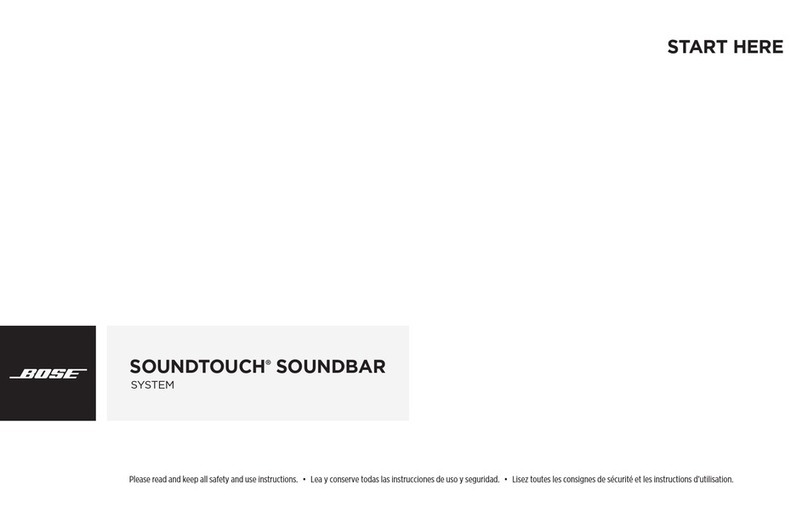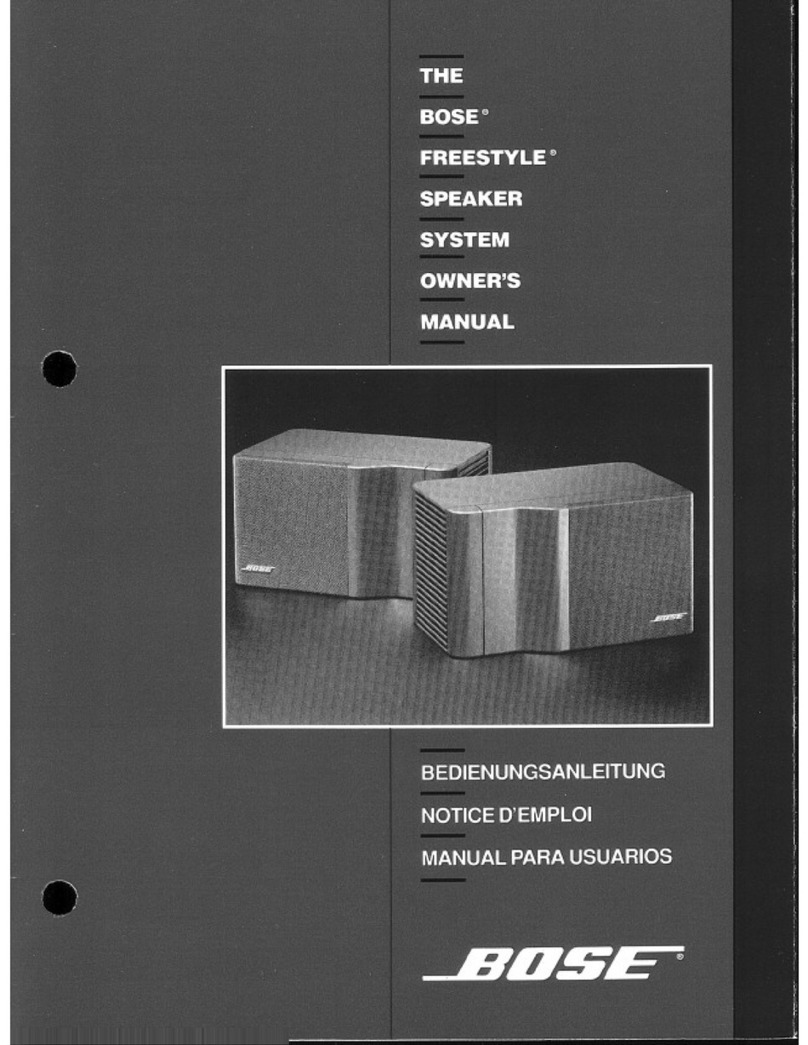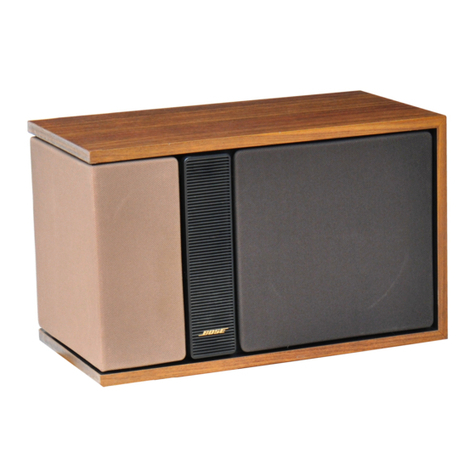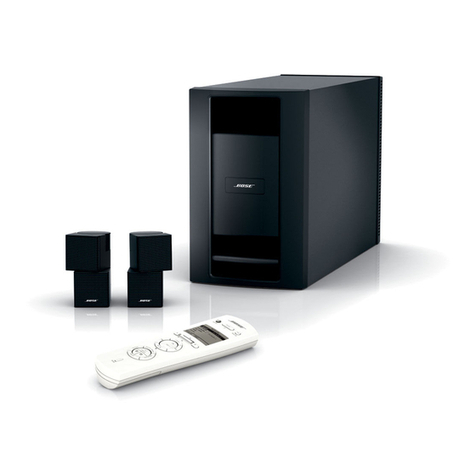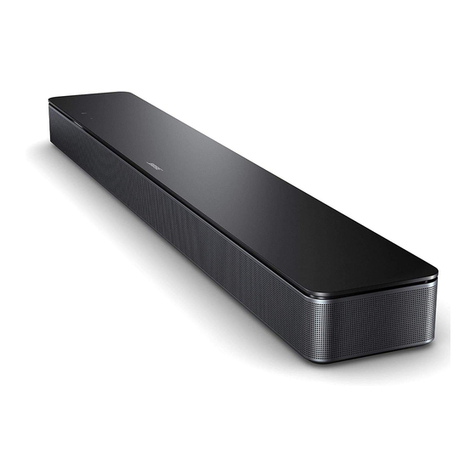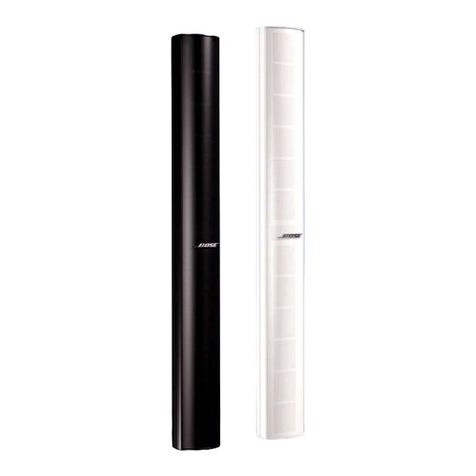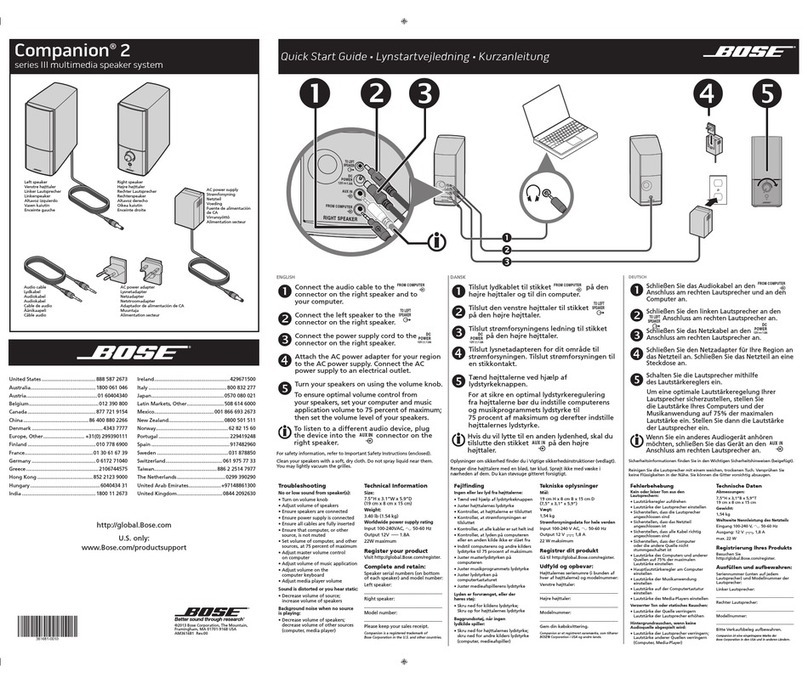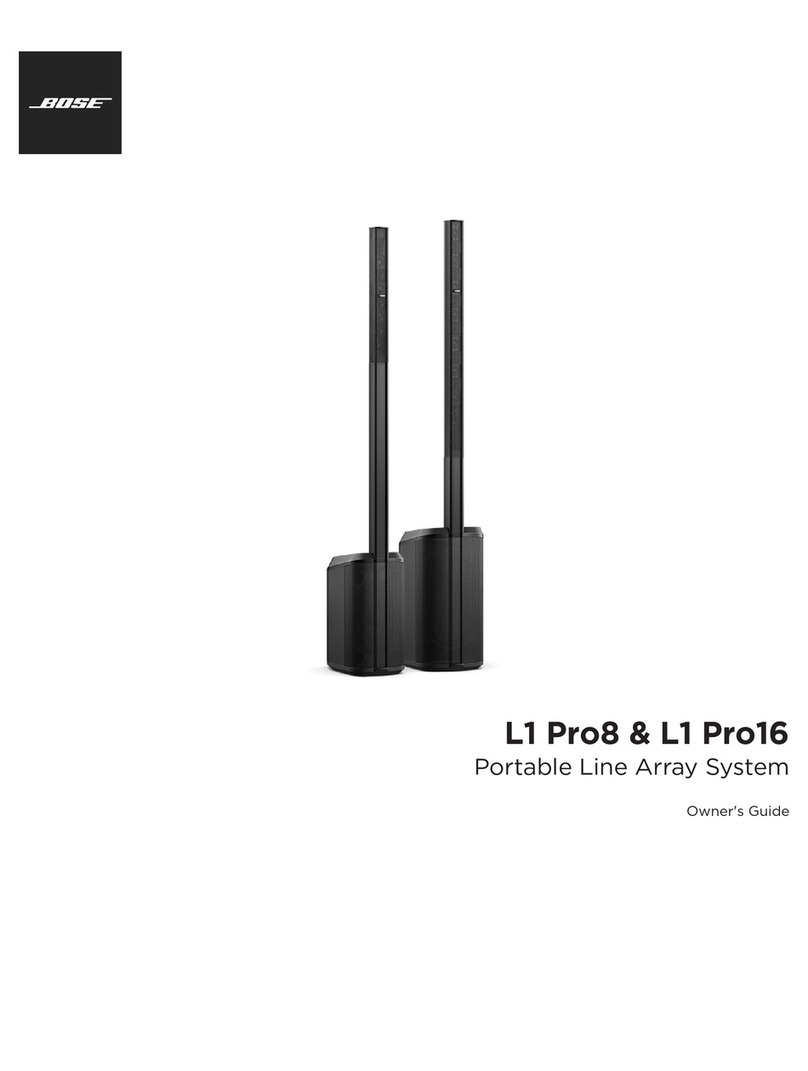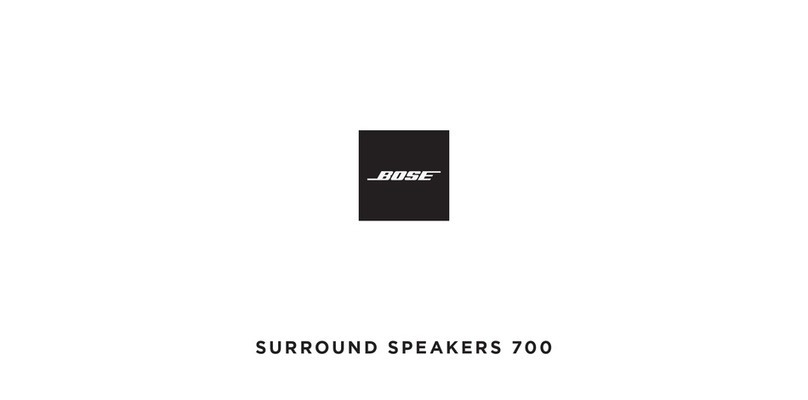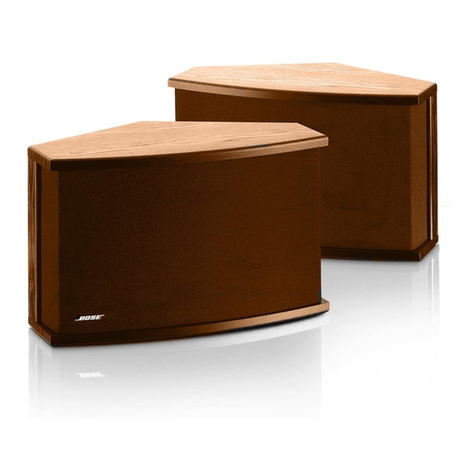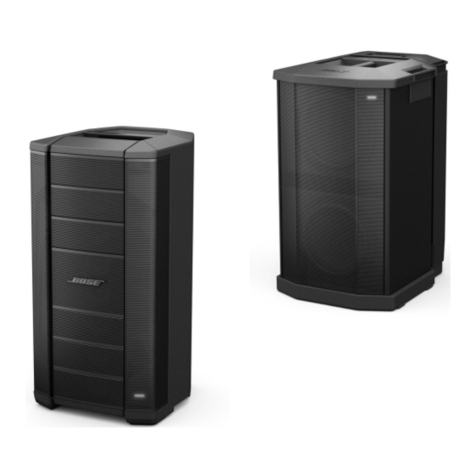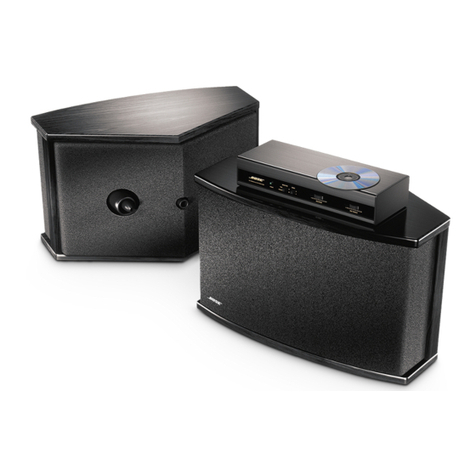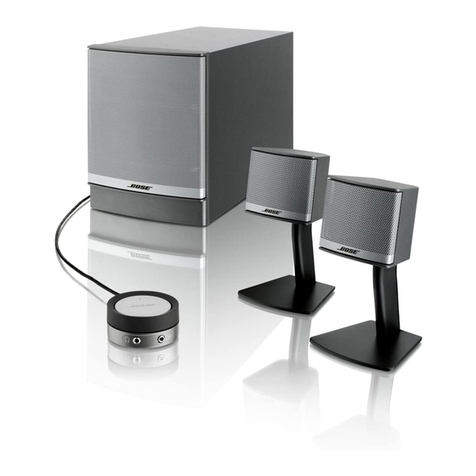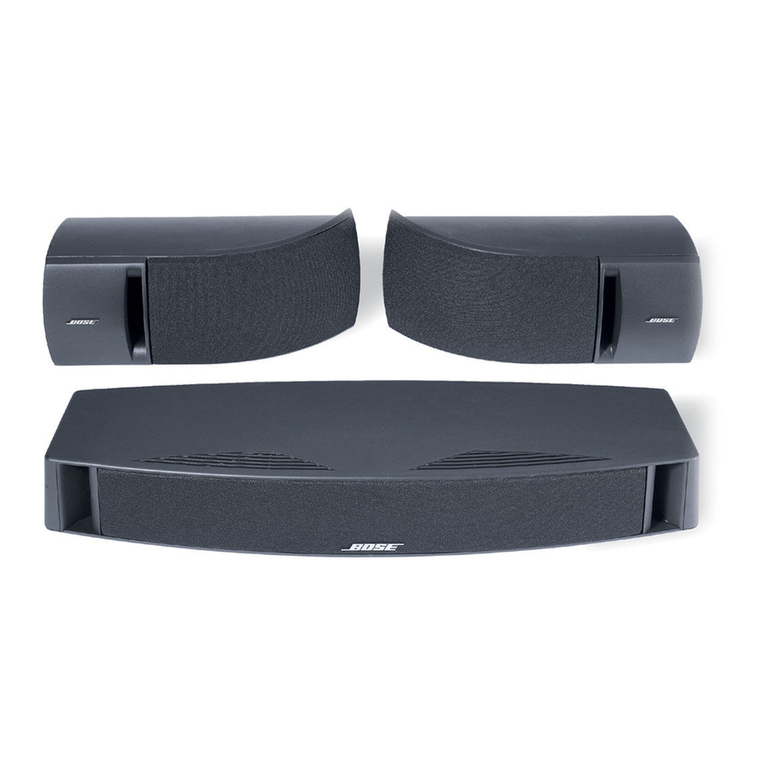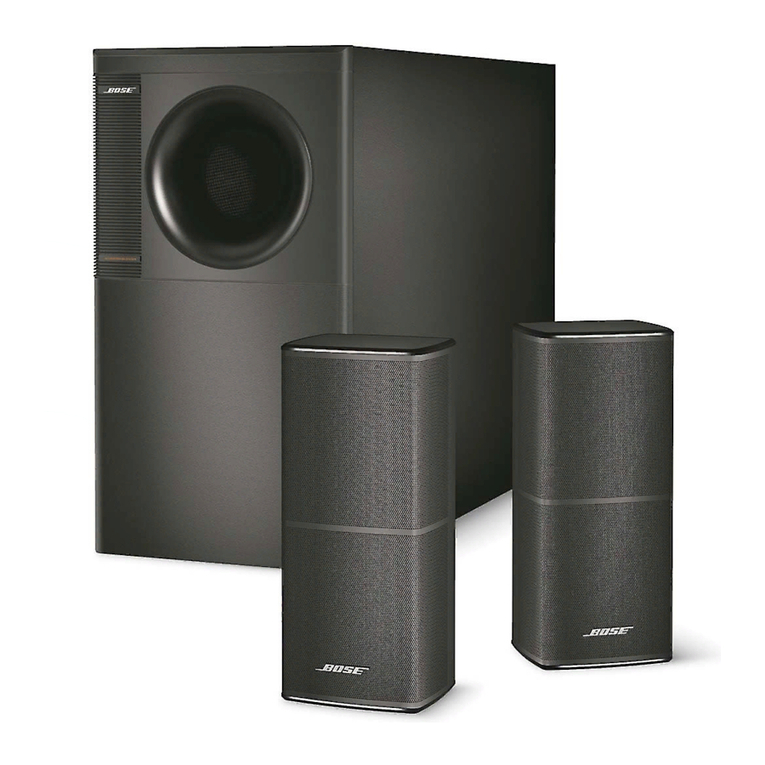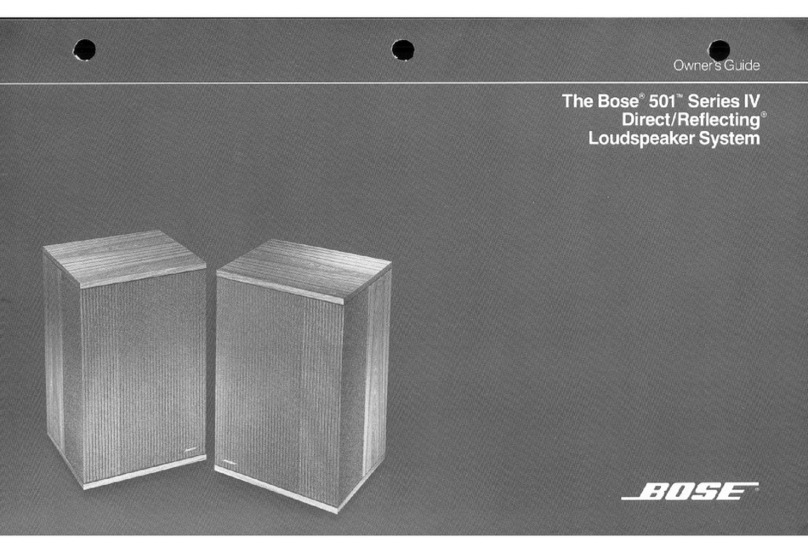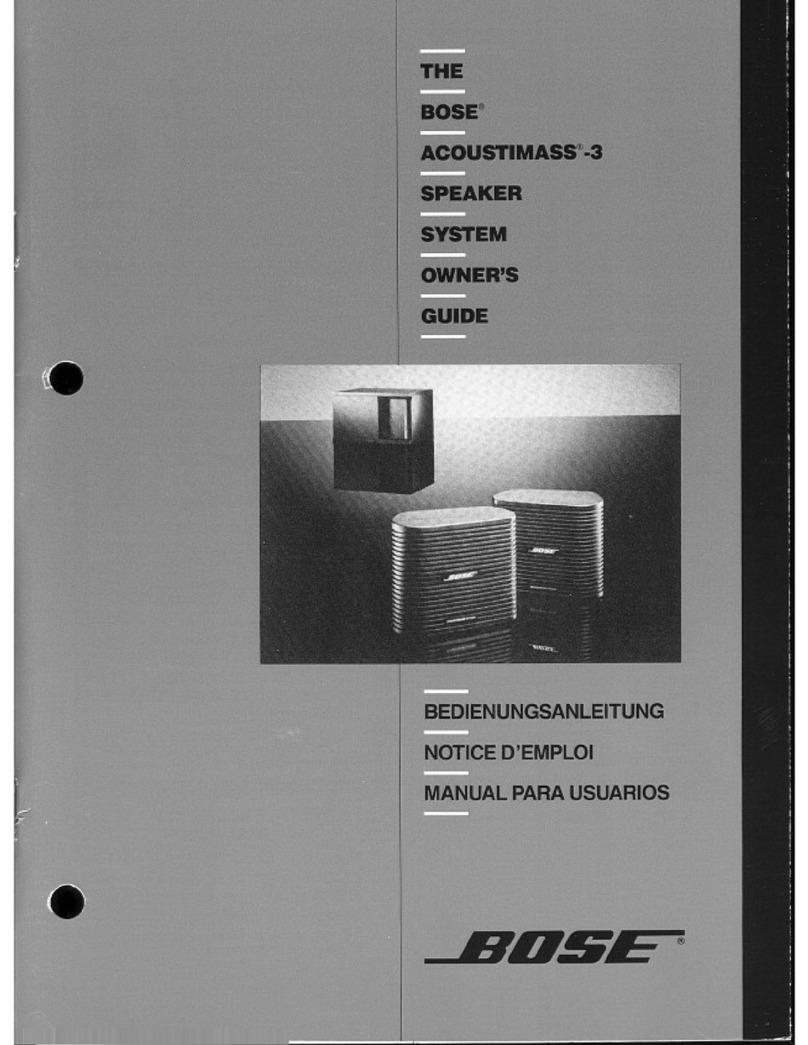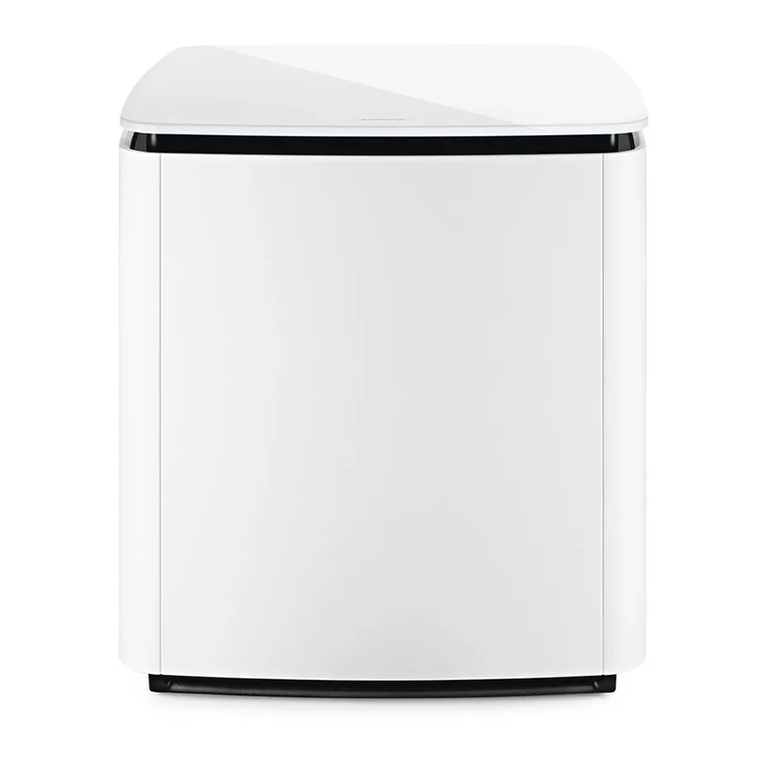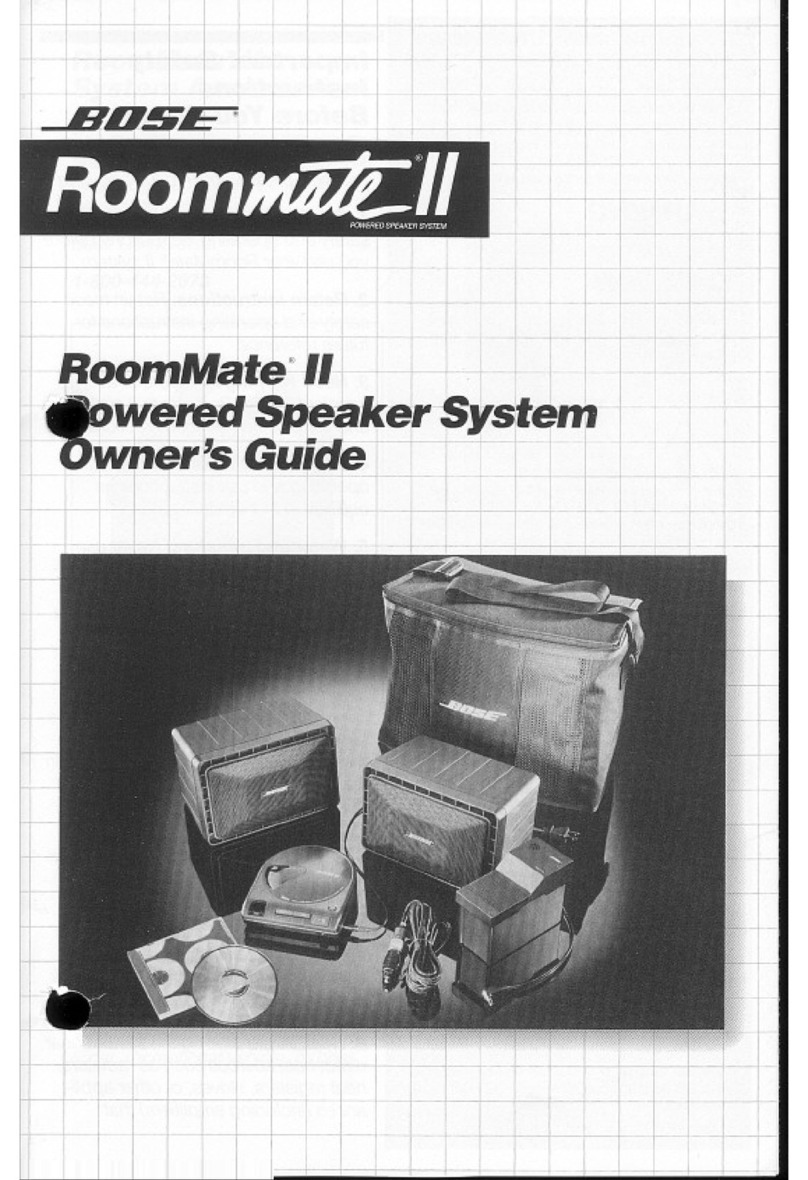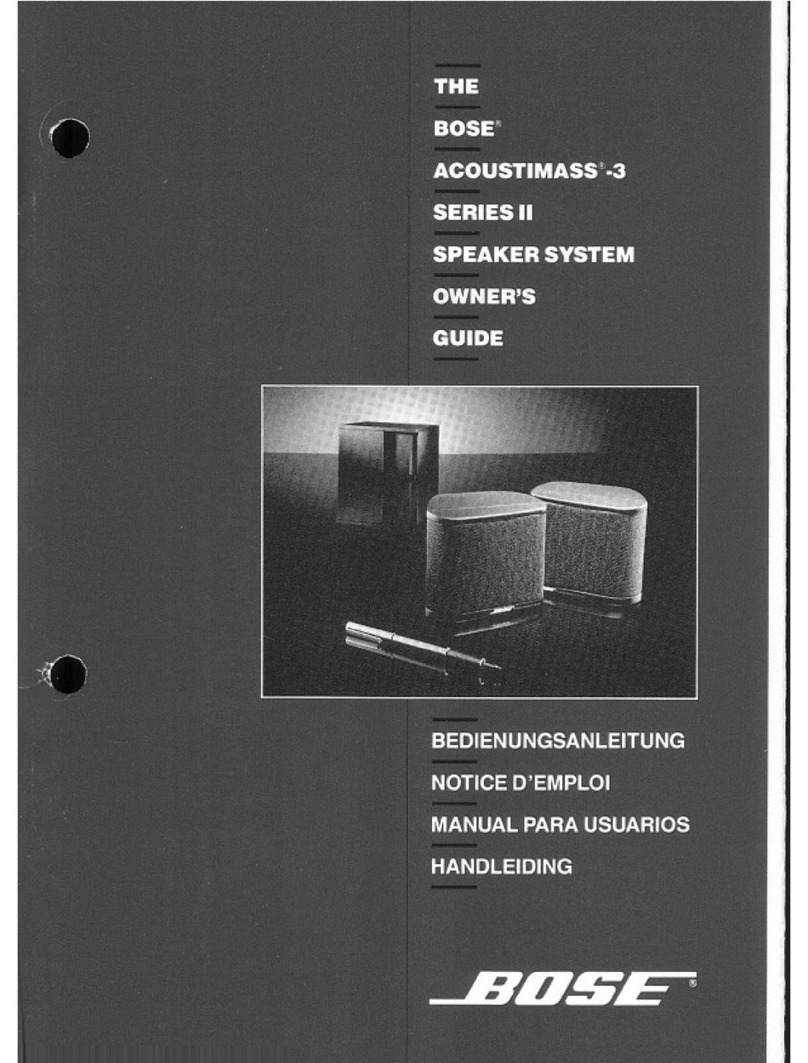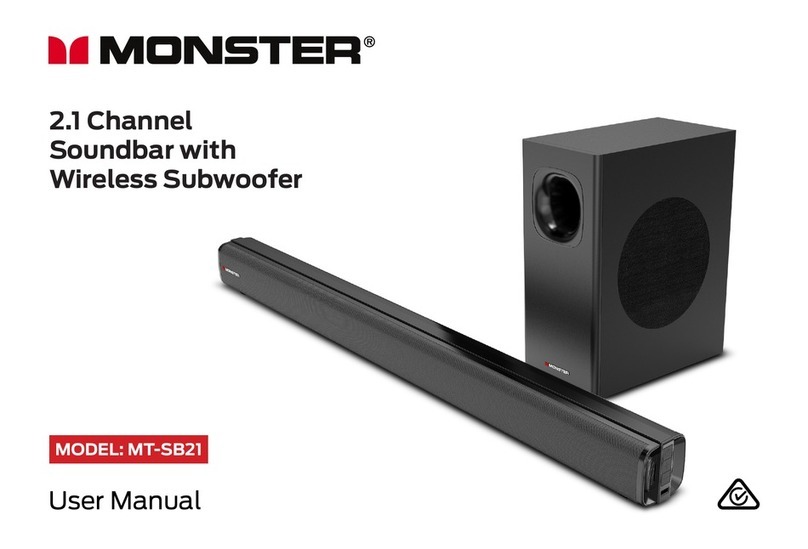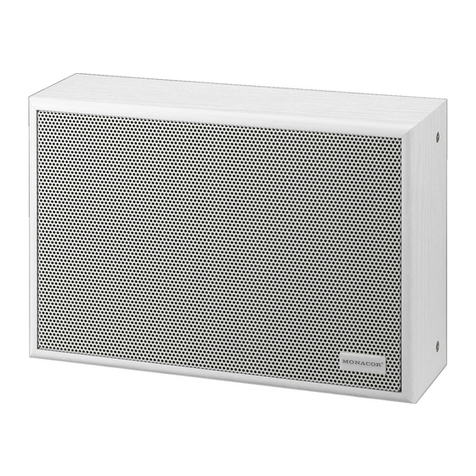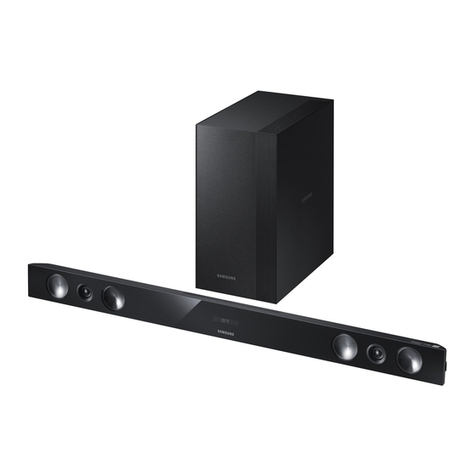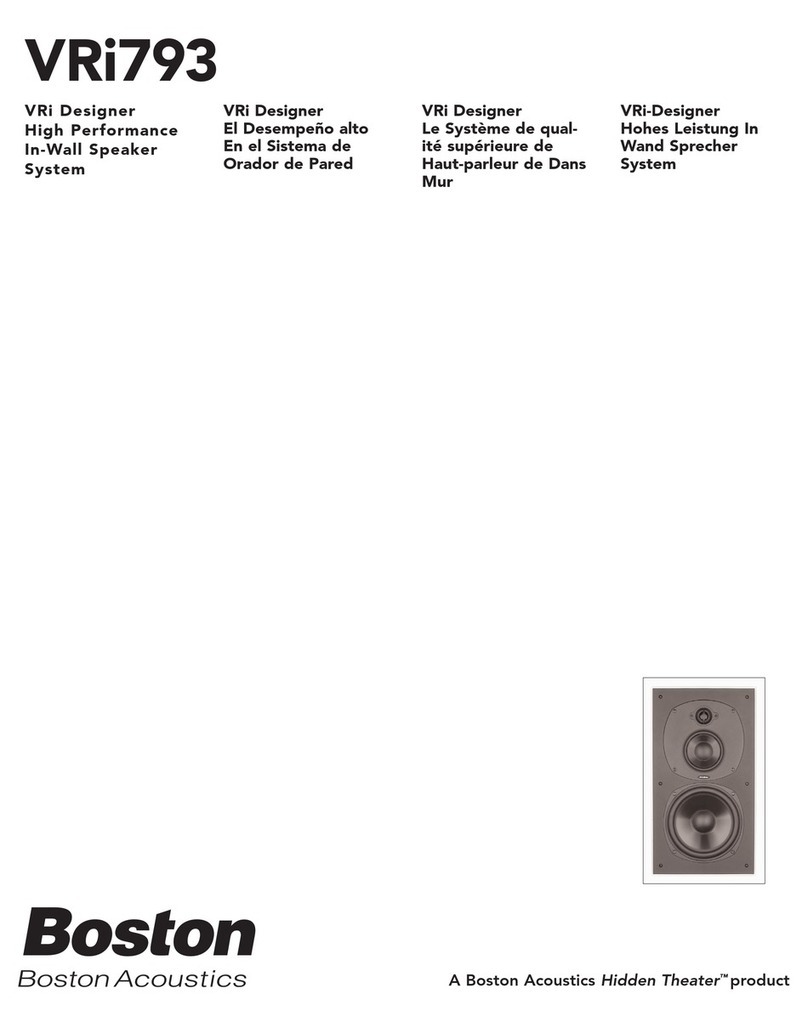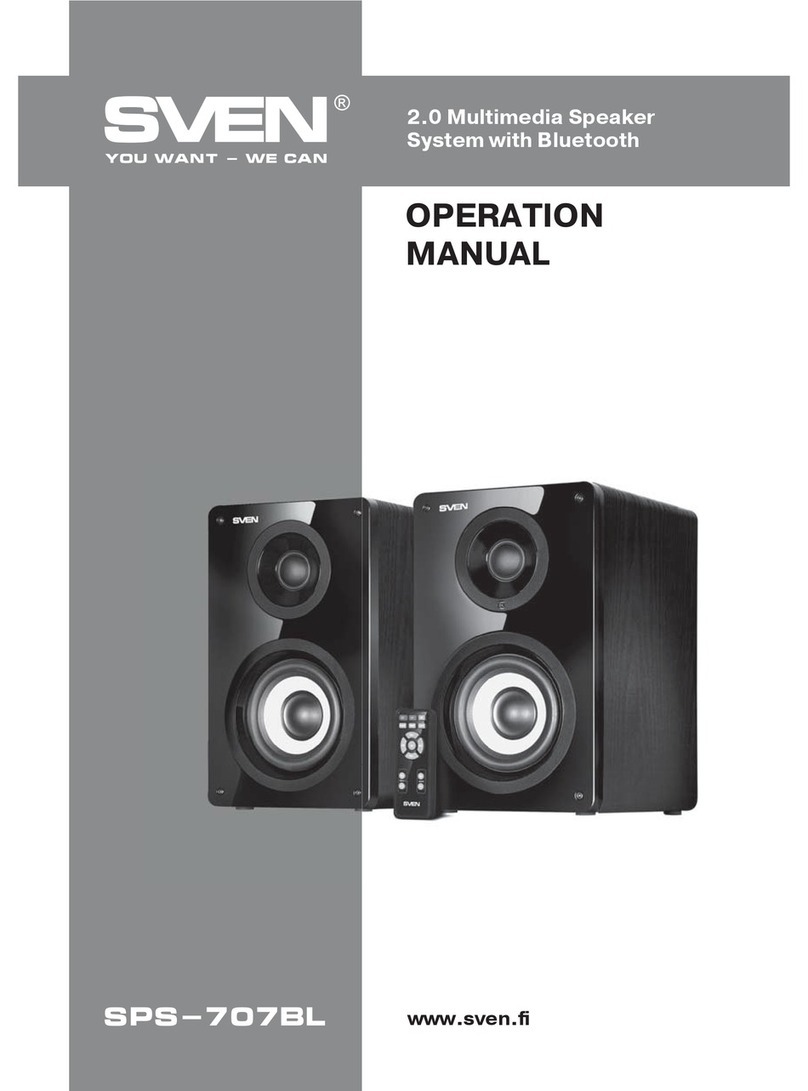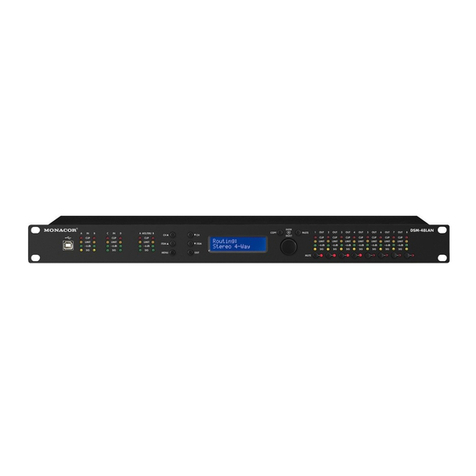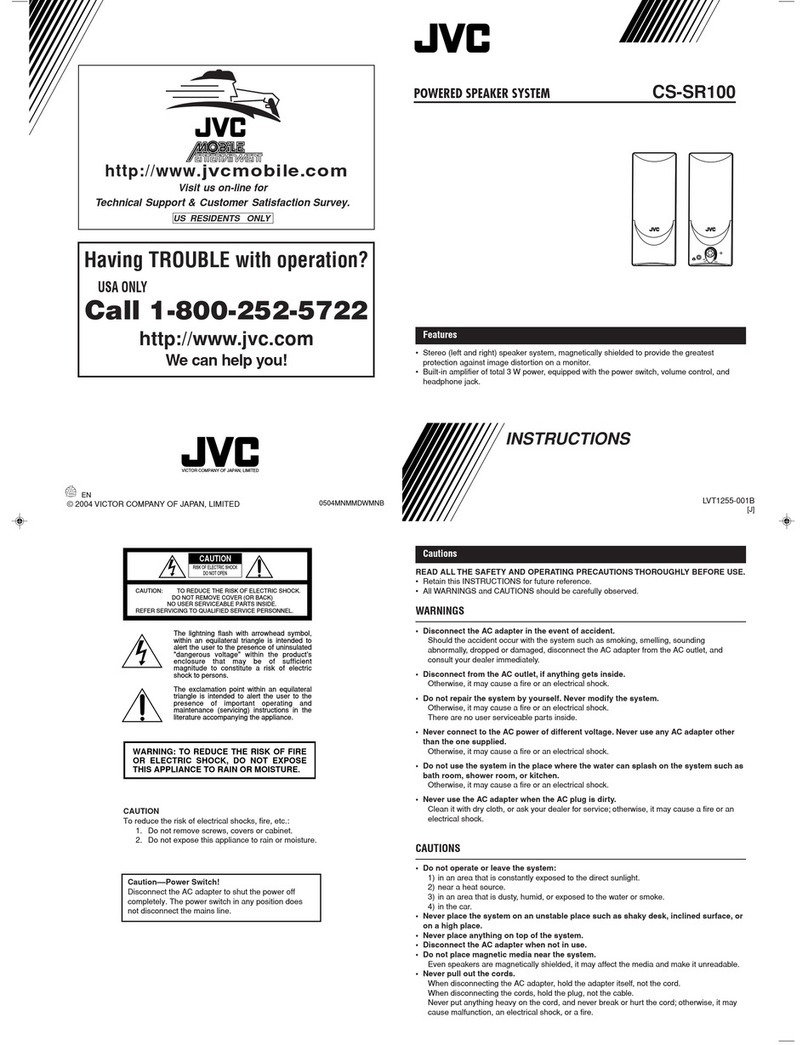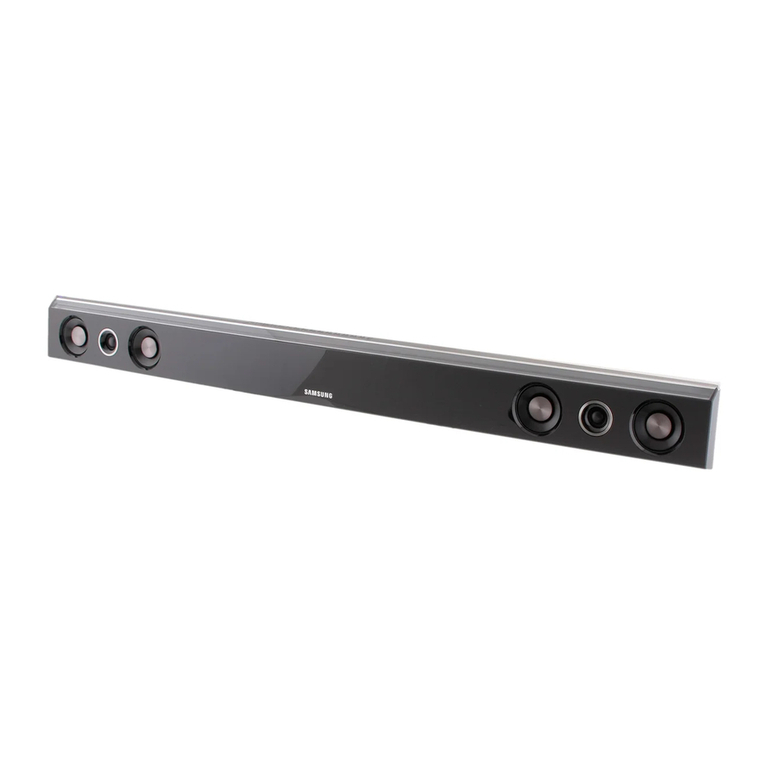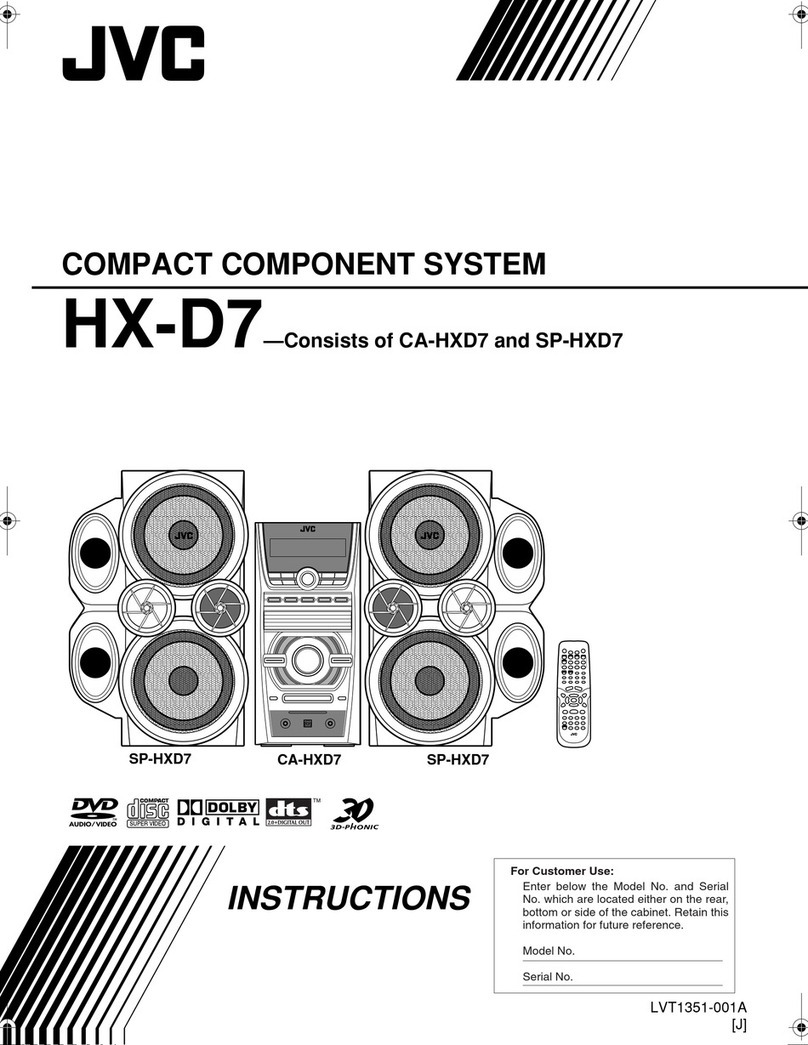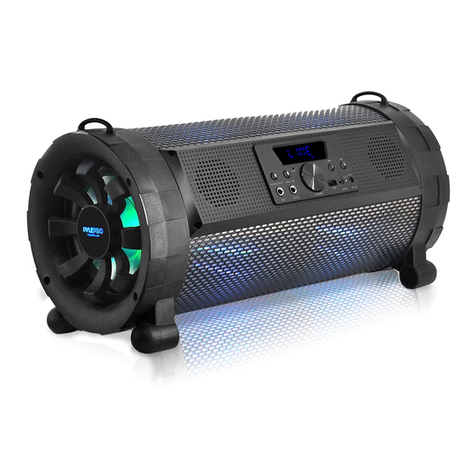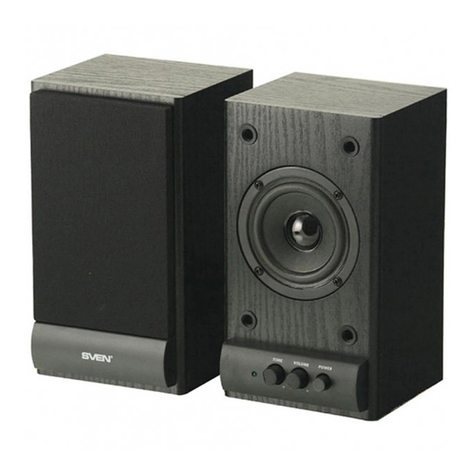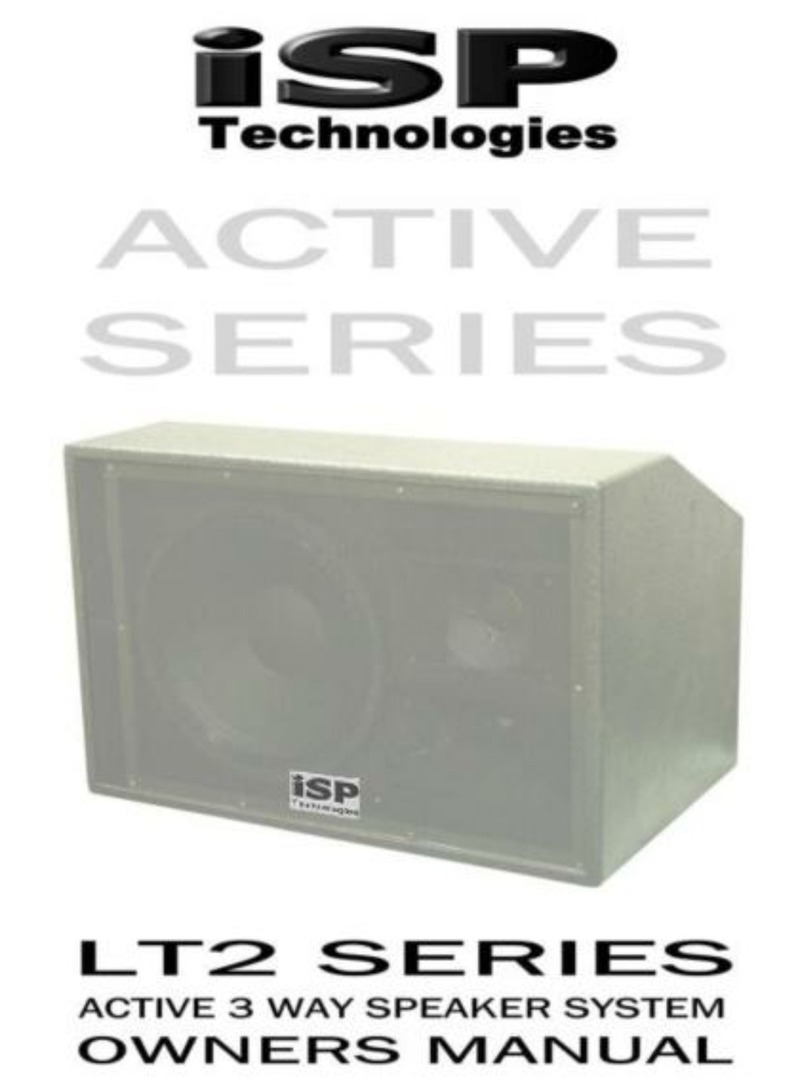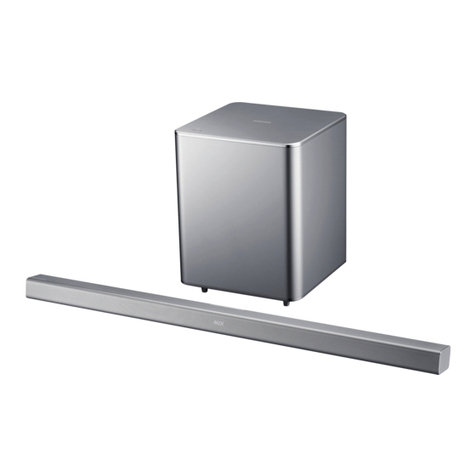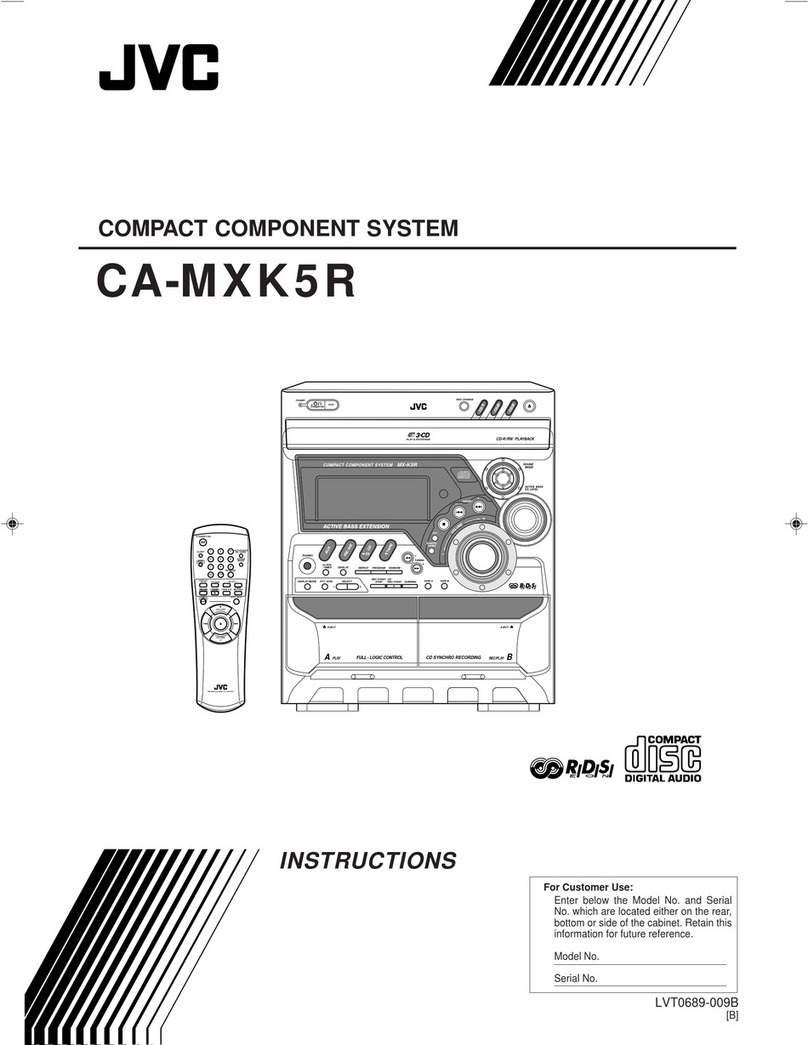Choose locations for your 901®speakers that use the walls to best advantage by reflecting
sound throughout the listening room. Refer to the drawing on page 7.
Place the speakers along the same wall (see Figure 3):
• 4 to 12 feet (1.2 – 3.6 m) apart, with the V-shaped rear of the speaker between 8 and 18
inches (20 – 45 cm) from the rear wall. Do not aim the V toward a corner.
• 18 inches (45 cm) of clear space around the sides, top, and bottom of the speakers.
• at least 2 feet (60 cm) from sound-absorbent furnishings.
• 18 to 48 inches (45 – 120 cm) from the side and rear walls.
• 18 to 36 inches (45 – 91 cm) from the floor or ceiling. Do not place the speakers exactly
halfway between floor and ceiling.
Within these guidelines, remember that the closer the speakers are placed to a reflective
surface, like a wall, the more bass is reproduced.
You may place 901 speakers on a table or shelf. You may also use Bose®floor pedestals, or
suspend the speakers from your ceiling. Refer to Figure 3 on page 7.
Although each speaker weighs 35 lb (16 kg), a suitable shelf or table must be able to support
140 lb (64 kg). Keep an adequate distance between the speakers and the rear wall as listed in
“Guidelines for placement” above.
Use only Bose pedestals (PS-6) as floor stands. They are designed to provide the proper
support and are available through your authorized Bose dealer. Please read the pedestal
attachment instructions before making any speaker connections. Four pilot holes on the
bottom of each speaker (see Figure 2, hole set A) are pre-drilled for the purpose of anchoring
the speaker to the pedestal.
Use these guidelines to ensure safe suspension of your 901 speakers. Three steel support
chains are recommended. We cannot specify the ceiling attachments. The type to use
depends on the type of building construction.
Do not mount on surfaces that are not sturdy enough, or that have hazards con-
cealed behind them, such as plumbing or electrical wire. If you are unsure of your ability to install
these speakers, contact a qualified professional installer.
Note:The speakers hang in an inverted position, with the terminal connections facing up.
Carefully rotate the Bose logo 180˚ (so it appears right side up) before hanging the speakers.
Pedestal (A) and ceiling mount
(B) pilot holes

